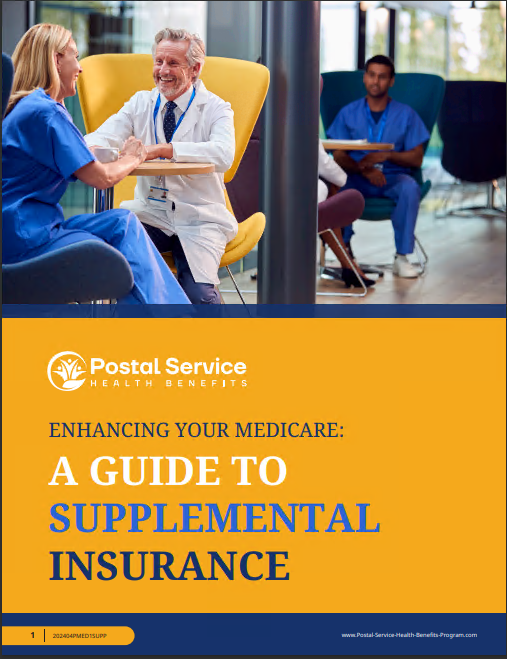Key Takeaways
-
The new $2,000 out-of-pocket cap in Medicare Part D reduces prescription drug expenses, but it doesn’t eliminate all potential medication-related costs.
-
PSHB enrollees must still consider drug tiers, coverage restrictions, and coordination with Medicare Part B to avoid unexpected gaps in coverage.
What the $2,000 Part D Cap Actually Covers
In 2025, Medicare Part D introduces a major policy shift: a $2,000 annual out-of-pocket cap on covered prescription drugs. This change removes the old “catastrophic phase,” where you still paid a portion of your drug costs after exceeding a spending threshold.
Under the new structure:
-
You pay out-of-pocket costs for prescriptions up to $2,000 in the calendar year.
-
Once you hit the cap, your plan pays 100% of the remaining covered drug costs.
-
There’s no more 5% coinsurance after the catastrophic threshold, as it has been eliminated.
This is great news for many—but it doesn’t mean your medications are fully covered. There are still areas where you might run into costs you weren’t expecting, especially if you’re enrolled in the Postal Service Health Benefits (PSHB) Program and also qualify for Medicare.
Why the $2,000 Cap Isn’t a Total Cost Shield
Even with this out-of-pocket maximum, your prescription drug expenses can still be significant if:
-
Your medication isn’t on your plan’s formulary
-
The drug requires prior authorization or step therapy
-
You use a pharmacy that’s out of network
-
You hit the cap early in the year and new prescriptions are needed later
Let’s explore how these can affect you under PSHB and what you can do to prepare.
Drugs Outside Your Plan’s Formulary Still Cost Full Price
Each Part D plan (including those bundled into PSHB for Medicare-eligible enrollees) uses a list of approved drugs known as a formulary. If your medication isn’t listed, the plan doesn’t cover it—even after you reach the $2,000 out-of-pocket cap.
This means:
-
You’ll pay the full retail price for that drug.
-
The amount you pay won’t count toward your $2,000 cap.
-
You may need to switch to a covered alternative or file a coverage exception request, which may or may not be granted.
This is especially important if your condition requires specialty medications or name-brand drugs with limited alternatives.
Tiered Pricing Still Affects What You Pay Early On
Before reaching the $2,000 cap, cost-sharing is based on drug tiers:
-
Generic drugs typically have the lowest copayments.
-
Preferred brand-name drugs fall in a mid-tier category.
-
Specialty drugs often come with the highest out-of-pocket costs.
Until you hit that $2,000 threshold, you’re still responsible for tier-based copays and coinsurance. A few specialty medications could bring you to the cap quickly—but many beneficiaries will take longer, especially if they use only generics.
Network Limitations Can Still Add to Your Bills
To get the best value from your PSHB Part D coverage, you need to use a network pharmacy. If you fill a prescription at an out-of-network pharmacy:
-
The drug may not be covered at all.
-
If partially covered, you may pay higher rates that don’t count toward your cap.
Always check your plan’s network directory each year. Plan networks can change from one Open Season to the next, and your preferred pharmacy may no longer be in-network.
Restrictions Like Prior Authorization and Step Therapy Remain
The $2,000 cap doesn’t waive utilization management rules. These include:
-
Prior authorization: Approval is needed from the plan before certain drugs are covered.
-
Step therapy: You must try less expensive alternatives before the plan approves a costlier medication.
-
Quantity limits: Your plan may limit how much of a drug you can get at once.
If you don’t follow the process or your doctor doesn’t complete the paperwork on time, you might pay out-of-pocket for something your plan otherwise would have covered.
If You Switch Plans Mid-Year, the Cap Doesn’t Reset
This is crucial for PSHB retirees or annuitants who experience a Qualifying Life Event (QLE) that allows for a plan change outside of Open Season:
-
Your spending toward the $2,000 cap follows you.
-
The new plan receives records of how much you’ve paid so far.
-
You don’t get a fresh cap; you continue from where you left off.
It’s important to confirm with both your current and new plan administrators to avoid payment confusion.
Out-of-Pocket Costs Beyond Part D: What’s Not Included
The $2,000 cap only applies to covered prescription drugs under Medicare Part D. It does not apply to:
-
Drugs covered under Medicare Part B, such as those administered in a clinic or doctor’s office (e.g., certain injectables, chemotherapy drugs).
-
Over-the-counter medications, which are not part of Part D.
-
Drugs excluded by Medicare by law, such as weight loss or cosmetic drugs.
-
Drugs that require you to meet other deductibles first (e.g., if your plan has a separate Part D deductible up to $590 in 2025).
So even with the $2,000 protection, these costs are outside the scope and must be budgeted for separately.
Medicare Part B and PSHB Drug Coordination
Many drugs you receive in outpatient or clinical settings fall under Medicare Part B rather than Part D. If you’re enrolled in both PSHB and Medicare Part B, coordination between these coverages becomes essential.
Here’s how:
-
PSHB plans may waive or reduce deductibles and cost-sharing for medications when Medicare Part B is also covering part of the cost.
-
However, you still need to make sure your provider properly bills both Medicare and your PSHB plan to avoid unnecessary out-of-pocket expenses.
Coordination isn’t automatic. If paperwork or billing codes are wrong, your claim may be denied, even for drugs you assume are covered.
Monthly Payment Option Doesn’t Mean Lower Costs
A new Medicare Prescription Payment Plan in 2025 allows you to spread your out-of-pocket costs over 12 months. This doesn’t reduce your total expense—it just spreads it out.
If you opt in:
-
You can avoid paying large lump sums when filling expensive prescriptions.
-
Your total financial liability remains up to $2,000 for the year (for covered Part D drugs).
-
Missed payments could lead to disenrollment from the payment program, requiring you to pay the balance in full.
This tool is designed to help with budgeting, not to lower actual drug prices.
Importance of Reviewing the PSHB Part D Drug List Every Year
Because plan formularies, drug tiers, and rules change annually, reviewing the Annual Notice of Change (ANOC) from your PSHB plan is essential. You should do this every fall during Open Season.
Here’s what to look for:
-
Are your current medications still on the formulary?
-
Have their tiers changed, increasing your copay?
-
Has your preferred pharmacy remained in-network?
-
Are any new restrictions like prior authorization now required?
Staying on top of these changes ensures you avoid surprises when it’s time to refill your prescription.
Get the Full Picture Before You Assume You’re Covered
The $2,000 cap in Medicare Part D represents real progress. But as a PSHB enrollee, you need to understand that it’s not a full safety net. The cap only applies to certain drugs, under specific circumstances, and within defined plan limits.
Your real protection comes from understanding how PSHB, Medicare Part D, and Medicare Part B work together—and making sure your providers follow billing protocols to ensure coverage.
Find Confidence in the Details of Your Drug Coverage
You deserve to make healthcare decisions with complete clarity. While the new $2,000 cap is a step in the right direction, it’s not the final answer. Review your PSHB plan, check your Medicare enrollment, and confirm how your drugs are covered. If you’re unsure, get in touch with a licensed agent listed on this website for expert help. Let your next prescription refill be one without surprises.







